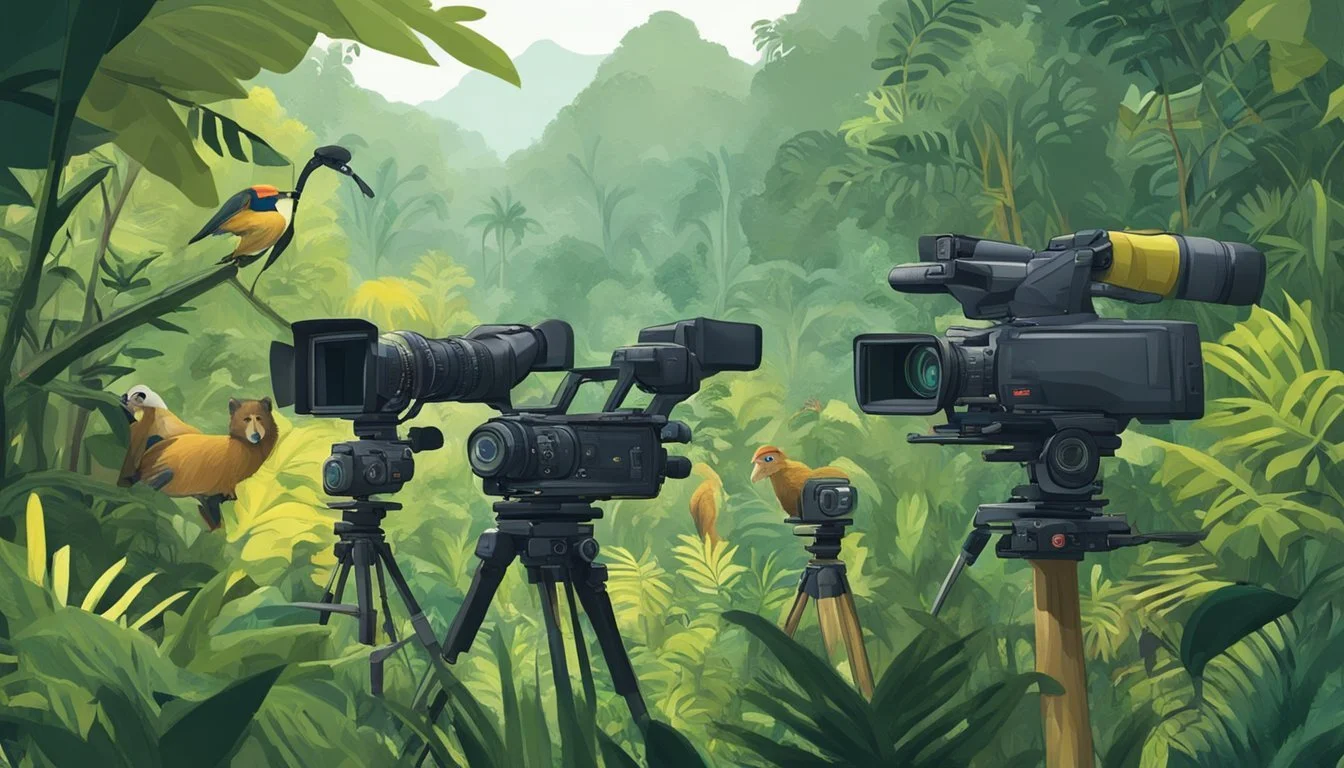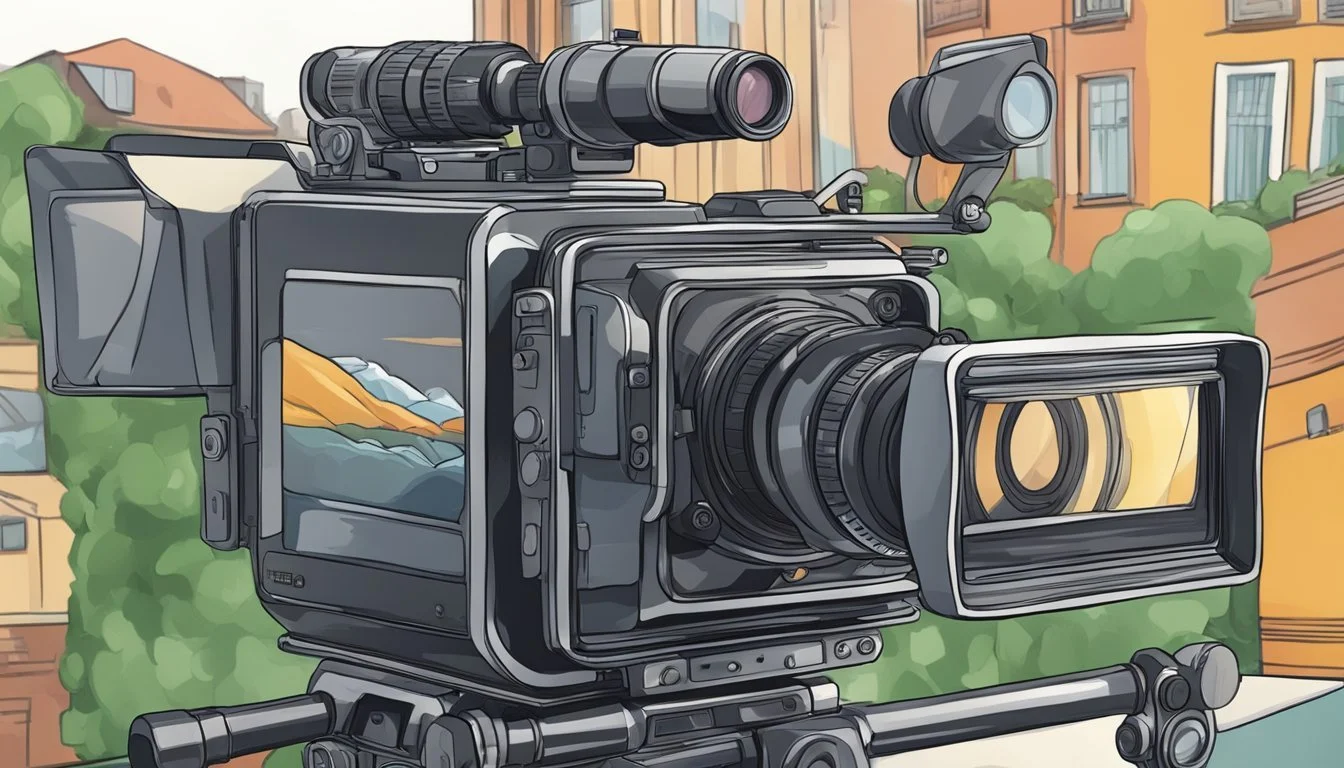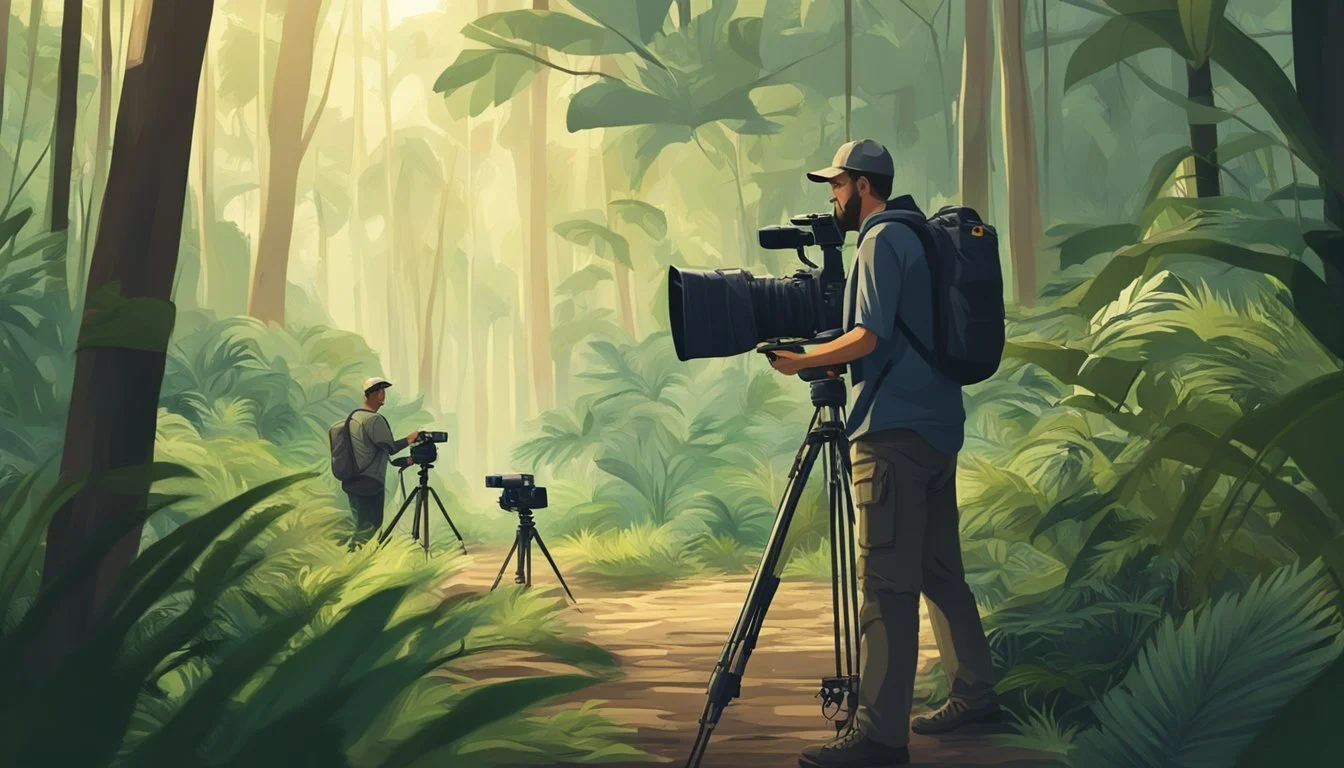Shocking Truths Unveiled: Documentary TV Shows Expose Hidden Realities!
Documentary TV shows offer viewers a window into real-life stories, events, and phenomena. These programs explore a wide range of subjects, from nature and wildlife to historical events and scientific discoveries. Documentary TV series captivate audiences by providing deep insights and unveiling the stories behind real-life events, important people, and groundbreaking discoveries.
Streaming platforms and television networks have expanded their documentary offerings in recent years. David Attenborough's nature documentaries continue to set the standard for wildlife programming, while true crime and investigative series gain popularity. From thought-provoking exposés to visually stunning explorations of our planet, documentary TV shows cater to diverse interests and tastes.
The best documentary TV shows combine compelling storytelling with factual information, creating an engaging viewing experience. They often feature expert interviews, archival footage, and immersive cinematography to bring their subjects to life. As audiences seek both entertainment and education, documentary series remain a vital part of the television landscape.
The Rise of Documentary Series
Documentary series have transformed the television landscape, offering in-depth explorations of compelling topics. Streaming platforms have fueled their popularity, while evolving formats engage audiences in new ways.
Defining Docuseries
Docuseries are multi-episode documentary programs that explore a single subject or theme in depth. They differ from traditional documentaries by allowing for more extensive coverage and storytelling across multiple installments.
Docuseries often blend investigative journalism, historical research, and personal narratives. This format enables viewers to gain a comprehensive understanding of complex topics.
Popular examples include true crime series, nature documentaries, and biographical explorations of notable figures. The episodic structure allows for cliffhangers and narrative arcs that keep audiences engaged.
Evolution of the Format
Documentary series have roots in early television, but the format has evolved significantly. Early docuseries often focused on nature or historical topics, presented in a straightforward manner.
Modern docuseries employ diverse storytelling techniques, including:
Reenactments
Animation
Interactive elements
Social media integration
These innovations make complex subjects more accessible and engaging to viewers. Producers now experiment with release strategies, such as binge-able full-season drops or weekly episodic releases.
The rise of serialized storytelling in fiction has influenced docuseries, with many adopting narrative techniques to create compelling arcs across episodes.
Role of Streaming Platforms
Streaming platforms have played a crucial role in the rise of documentary series. Netflix, in particular, has invested heavily in original docuseries productions.
Key factors contributing to this trend include:
Flexible viewing options
Algorithm-driven recommendations
Global distribution reach
Streaming services provide creators with more freedom in episode length and series structure. This flexibility allows for more nuanced storytelling and in-depth exploration of topics.
The success of docuseries on streaming platforms has led to increased investment and a wider variety of subjects being covered. True crime, sports, and music documentaries have found particularly large audiences on these platforms.
Genres and Themes
Documentary TV shows span a wide range of genres and themes, catering to diverse viewer interests. These programs explore real-world subjects through various lenses, offering both entertainment and education.
True Crime Documentaries
True crime documentaries captivate audiences with gripping narratives of real criminal cases. These shows often delve into unsolved mysteries, high-profile murders, and complex investigations. Popular series like "Making a Murderer" and "The Jinx" have sparked public debates about the justice system.
True crime documentaries frequently use reenactments, archival footage, and interviews with key figures to reconstruct events. They explore the psychological aspects of criminals and the impact of crimes on victims and communities.
Many true crime shows focus on cold cases, using new technology and fresh perspectives to reexamine old evidence. This genre has led to renewed interest in some cases, occasionally resulting in real-world legal developments.
Nature and Wildlife
Nature documentaries transport viewers to Earth's most remote and spectacular locations. Series like "Planet Earth" and "Blue Planet" showcase the planet's diverse ecosystems and wildlife. These shows often feature breathtaking cinematography and cutting-edge filming techniques.
David Attenborough's narration has become synonymous with wildlife documentaries, his distinctive voice guiding viewers through natural wonders. These programs highlight animal behavior, survival strategies, and the delicate balance of ecosystems.
Many nature documentaries also address conservation issues, raising awareness about endangered species and environmental challenges. They combine entertainment with education, fostering appreciation for the natural world.
Historical and Biographical
Historical documentaries bring the past to life through a mix of expert interviews, archival footage, and dramatized reenactments. These shows cover a wide range of topics, from ancient civilizations to modern history.
Biographical documentaries focus on influential figures, exploring their lives, achievements, and impact on society. Subjects range from political leaders and artists to scientists and cultural icons.
Some historical documentaries examine lesser-known stories or offer new perspectives on well-known events. They often incorporate the latest historical research, providing viewers with up-to-date information and interpretations.
Science and Technology
Science documentaries explain complex scientific concepts in accessible ways. They cover diverse fields such as physics, biology, astronomy, and technology. These shows often use visual effects and animations to illustrate abstract ideas.
Many science documentaries explore cutting-edge research and technological innovations. They feature interviews with leading scientists and demonstrations of new technologies.
Some programs focus on the history of scientific discoveries, tracing the development of key theories and inventions. Others look to the future, examining potential scientific breakthroughs and their implications for society.
Cultural and Societal
Cultural documentaries explore diverse traditions, customs, and ways of life around the world. They offer insights into different societies, promoting understanding and appreciation of cultural diversity.
These shows often address contemporary social issues, examining topics like inequality, human rights, and globalization. They may feature personal stories that illustrate broader societal trends.
Many cultural documentaries focus on art, music, and literature, exploring their roles in shaping society. They often highlight the work of artists and creators from various backgrounds, celebrating cultural expression in its many forms.
Documentary Filmmaking
Documentary filmmaking blends artistic vision with journalistic integrity to capture real-life stories. It requires a unique set of skills and techniques to bring truth to the screen in compelling ways.
Behind-the-Scenes
Documentary production often involves extensive preparation and research. Filmmakers spend months or even years gathering information, securing access to subjects, and building trust with participants. On-location shoots can be unpredictable, requiring crews to adapt quickly to changing circumstances.
Editing plays a crucial role in shaping the narrative. Documentarians sift through hours of footage to craft a cohesive story. This process may involve difficult decisions about which material to include or exclude.
Many documentaries incorporate archival footage, photographs, and interviews to provide historical context. These elements are carefully woven together to create a rich tapestry of information and emotion.
The Role of the Filmmaker
Documentary directors must balance objectivity with their artistic vision. They make critical choices about framing, pacing, and narrative structure that influence how viewers perceive the subject matter.
Ethical considerations are paramount. Filmmakers have a responsibility to represent their subjects fairly and accurately. This often involves navigating complex relationships and potential conflicts of interest.
Many documentarians become deeply invested in their projects, sometimes spending years following a story. This level of commitment can lead to powerful, intimate portrayals of their subjects.
Cinematography and Storytelling
Visual style in documentaries ranges from raw, handheld footage to carefully composed shots. Cinematographers must be adept at capturing spontaneous moments while also creating visually compelling images.
Lighting techniques vary depending on the subject and setting. Natural light is often preferred for its authenticity, but challenging environments may require additional equipment.
Sound design plays a crucial role in documentaries. Clear audio is essential for interviews, while ambient sounds can enhance the viewer's sense of place and atmosphere.
Editing rhythm and pacing are key storytelling tools. Skilled editors create emotional arcs and build tension through their choices of shot selection and sequence.
Notable Documentary Series and Their Impact
Documentary TV shows have profoundly shaped public understanding of complex issues and captivated audiences worldwide. These series have garnered critical acclaim, educated viewers, and become cultural touchstones.
Critically Acclaimed Series
"Planet Earth" stands as a pinnacle of nature documentaries. Its breathtaking cinematography and David Attenborough's narration have set new standards for wildlife filmmaking.
"The Staircase" revolutionized true crime storytelling. This gripping series follows the trial of Michael Peterson, accused of murdering his wife. It sparked debates about the justice system and documentary ethics.
"The Vietnam War" by Ken Burns and Lynn Novick received widespread praise. The series offers a comprehensive look at the conflict, blending archival footage with personal accounts.
Educational Influence
Documentary series have become powerful educational tools. "Cosmos: A Spacetime Odyssey" with Neil deGrasse Tyson reignited public interest in space and science.
"The Blue Planet" raised awareness about marine life and ocean conservation. Its impact led to increased efforts to reduce plastic waste and protect endangered species.
"The World at War" remains a definitive account of World War II. It combines eyewitness testimony with archival footage, providing valuable historical insights.
Cultural Phenomena
Some documentary series have transcended their genre to become cultural phenomena. "Making a Murderer" sparked widespread discussions about criminal justice reform.
"The Last Dance" captivated audiences with its inside look at Michael Jordan and the Chicago Bulls. It reignited interest in basketball history and 1990s culture.
"Tiger King" became a viral sensation during the COVID-19 pandemic. It shed light on the exotic animal trade while entertaining millions with its eccentric characters.
Representation and Inclusivity
Documentary TV shows have become powerful platforms for showcasing diverse voices and perspectives. These programs offer viewers insights into different cultures, experiences, and identities.
Diversity in Storytelling
Documentary series increasingly feature stories from underrepresented communities. Netflix's Representation Matters Collection highlights films and shows that amplify marginalized voices. These programs explore a wide range of topics, from social issues to personal journeys.
Indigenous children's stories are gaining more attention in documentaries. Shows like "Molly of Denali" blend entertainment with education about Native Alaskan culture.
Many documentaries now tackle intersectionality, exploring how different aspects of identity overlap and impact individuals' experiences.
Representation on Screen
On-screen representation in documentaries has improved in recent years. More diverse filmmakers and subjects are featured, bringing authenticity to storytelling.
LGBTQ+ representation has increased, with shows like "The L Word: Generation Q" offering nuanced portrayals of queer experiences.
Disability representation is growing, with documentaries featuring people with disabilities telling their own stories.
Some series actively challenge stereotypes and showcase the complexities of different communities.
Inclusion Practices
Documentary producers are adopting more inclusive practices behind the scenes. Many production companies now prioritize diverse hiring and leadership.
Equity initiatives aim to provide opportunities for underrepresented filmmakers to create and distribute their work.
Some networks have established diversity and inclusion departments to guide content creation and talent development.
Mentorship programs help emerging filmmakers from diverse backgrounds gain industry experience and connections.
Inclusive language and accessibility features, such as closed captioning and audio descriptions, are becoming standard practices in documentary production.
The Influence of Celebrities
Celebrities play a significant role in shaping documentary TV shows. Their involvement ranges from narrating series to participating as subjects, adding star power and credibility to productions.
Celebrity-Narrated Series
David Attenborough stands out as a preeminent figure in nature documentaries. His distinctive voice and passion for wildlife have become synonymous with high-quality nature programming.
Jeremy Clarkson has lent his recognizable style to automotive documentaries, bringing his wit and expertise to series about cars and engineering. His narration often adds entertainment value to informative content.
Celebrity narrators can attract wider audiences to educational topics. Their familiar voices create a sense of trust and engagement, making complex subjects more accessible to viewers.
Participation of Public Figures
Ronan Farrow's involvement in investigative documentaries has shed light on important social issues. His work often focuses on uncovering hidden truths and holding powerful figures accountable.
Some celebrities use documentaries as platforms to share personal stories or advocate for causes. These productions can offer intimate glimpses into their lives beyond public personas.
Public figures participating in documentaries can draw attention to critical topics. Their star power often leads to increased viewership and media coverage, amplifying the impact of the documentary's message.
The Research and Investigation Process
Documentary TV shows rely on thorough research and investigative techniques to uncover compelling stories. These methods involve extensive fieldwork, interviews, and fact-checking to ensure accuracy and credibility.
Investigative Journalism in Documentaries
Investigative journalists play a crucial role in documentary productions. They dig deep into complex issues, often spending months or years on a single story. For example, documentaries on elder abuse require reporters to gain trust with vulnerable sources and navigate sensitive legal waters. UFO-themed shows involve sifting through government documents and interviewing eyewitnesses to separate fact from fiction.
Journalists use various tools to gather information:
Public records requests
Undercover reporting (when ethically justified)
Data analysis
Confidential sources
These techniques help expose hidden truths and bring important issues to light.
Uncovering Untold Stories
Documentary makers excel at finding and telling stories that have been overlooked or suppressed. The case of Annie Mae Aquash, a Native American activist, exemplifies this approach. Filmmakers pieced together her story through extensive research and interviews with those who knew her.
The Menendez Brothers case also benefited from documentary treatment. Producers revisited court records, conducted new interviews, and analyzed evidence to provide fresh perspectives on the high-profile murders.
Key steps in uncovering untold stories:
Identify potential leads
Build relationships with sources
Cross-reference information
Present findings in a compelling narrative
This process often reveals new angles on well-known events or sheds light on forgotten histories.








